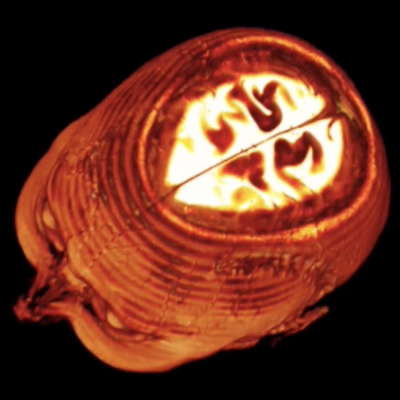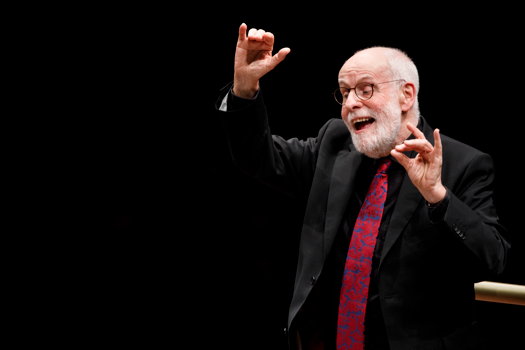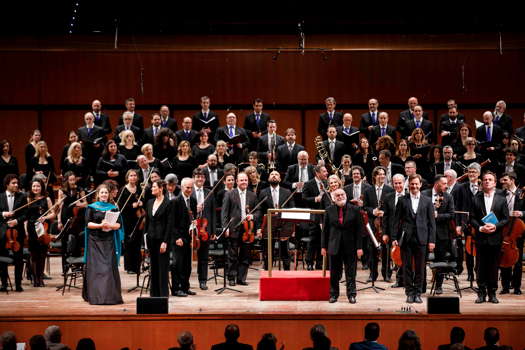 WORD SEARCH: Can you solve Allan Rae's classical music word search puzzles? We're currently publishing one per month.
WORD SEARCH: Can you solve Allan Rae's classical music word search puzzles? We're currently publishing one per month.
- Oleg Karavaichuk
- Charles Rosen
- Heitor Villa-Lobos
- Avie Records
- viola da gamba music
- Bernard Roberts
- Notes from the Fires
- Suntory Hall
 DISCUSSION: Composers Daniel Schorno and John Dante Prevedini discuss creativity, innovation and re-invention with Maria Nockin, Mary Mogil, Giuseppe Pennisi and Roderic Dunnett.
DISCUSSION: Composers Daniel Schorno and John Dante Prevedini discuss creativity, innovation and re-invention with Maria Nockin, Mary Mogil, Giuseppe Pennisi and Roderic Dunnett.

Easter Mozart
Ton Koopman conducts
the Mass in C and the Jupiter Symphony,
heard by GIUSEPPE PENNISI
Mozart is for Easter. This year, the Easter Concert at the National Santa Cecilia Academy was entirely devoted to Mozart, with Ton Koopman directing. The Dutch conductor is a specialist of the Baroque period and is a scholar, teacher and an academic too. The concert program included the Mass in C minor, for soloists, chorus and orchestra, as well as the Symphony No 41 in C major, 'Jupiter'. It was performed on 18, 19 and 20 April 2019, broadcast live on national radio and will be televised on a cultural channel. I attended the 20 April performance.
Whilst the Jupiter Symphony is one of the Mozart's most often performed orchestral compositions, the Mass in C minor has attracted important conductors (eg Bernstein, Gatti, Gui, Nagano, Sawallisch and Welser-Möst) but is not as often heard in concert halls.
Mozart had moved to Vienna in 1781 and composed the Mass during 1782-83. In a letter to his father, he mentioned a vow he had made to write a Mass when he would bring his then fiancée Konstanze to Salzburg to meet his family for the first time. Konstanze then sang the Et incarnatus est at its first performance in Peterkirche in Salzburg on Sunday 26 October 1783. However, the Mass had not been finished and most likely it was interpolated with other music that the performers, all members of the 'Hofmusik' - the musicians employed at the court of Salzburg's ruler, Prince Archbishop Count Hieronymus von Colloredo - were familiar with. The parts completed were the Kyrie, Gloria and Sanctus. All of the Credo following the aria Et incarnatus est is missing, the orchestration of the Credo is also incomplete, and all of the Agnus Dei. The Sanctus is partially lost and requires editorial reconstruction.
There is a good deal of speculation about why the work was left unfinished. Given the absolute necessity of a complete text for liturgical use, it is likely that Mozart spliced in movements from his earlier Masses or from Masses of other composers for the premiere, although Richard Maunder has noted that the surviving parts (including an organ part) contain only the completed movements. Mozart later reused the music from the Kyrie and Gloria, almost unchanged except for the text, in the cantata Davide Penitente K 469.
There have been several attempts to reconstruct the Credo and to complete the Mass. As said earlier, Ton Koopman is a scholar and a philologist. Thus, at the concert I listened to, his own completion of Mozart's Mass in C minor was performed. This was the first performance in Italy and possibly also the first worldwide. Koopman mantains that it is most likely that Mozart and his musicians had used parts of a Mass available in Peterkirche's library. In Koopman's view, most probably this was a Mass in C minor by Michael Haydn, a brother of the more famous Franz Joseph. Thus, after the reconstructed Credo, we heard Haydn's Agnus Dei, Hosanna, Benedictus and Dona nobis finale. In addition, the orchestra and the chorus were much larger than those available in 1783 in Peterkirche, a lovely Church with perfect acoustics but not of a size similar to that of a modern concert hall.

Ton Koopman conducting in Rome. Photo © 2019 Musacchio, Ianniello & Pasqualini
A successful attempt? As completed, the Mass was appreciated very much by the audience, who saluted it with warm applause and accolades. I could feel the difference between Mozart and the Michael Haydn sections. Mozart's music looked forward to developments in the first decades of the nineteenth century; Haydn's are backward looking at the baroque period. This was especially felt in the vocal parts. The initial numbers, such as the arias and the duet for two sopranos, here Maria Grazia Schiavo and Roberta Mameli, are transparent and almost sentimental - nearly love songs by Mozart to his fiancée. The quartet in the second part, where a tenor and a bass - Tilman Lichdi and Luca Tittolo - are added to the two sopranos, is full of coloratura and acrobatic vocalizing. The orchestra, chorus and soloists performed very well. This was, no doubt, an important ingredient of the work's success.

Ton Koopman, with soloists Maria Grazia Schiavo, Roberta Mameli, Tilman Lichdi and Luca Tittolo, plus the orchestra and choir of the Accademia Nazionale di Santa Cecilia in Rome. Photo © 2019 Musacchio, Ianniello & Pasqualini
The Symphony No 41 in C major, 'Jupiter', is the last of Mozart's symphonic works. It is performed very often. The Santa Cecilia orchestra knows it inside out. There is a perfect equilibrium between baroque and classicism. In my opinion, Koopman tilted toward the baroque. He handled the incursion of the minor tonality into the major of the composition very well. There was warm applause.
Copyright © 25 April 2019
Giuseppe Pennisi,
Rome, Italy


